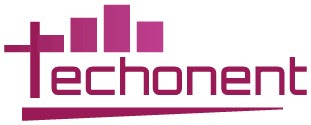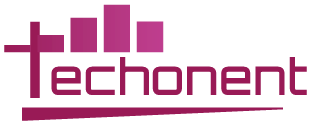
Be it the speed of the internet or be it the speed of a website, we all are in search of something quick in today's fast-paced world. With the decrease in the attention span of people, emphasis on speed remains to be one of the paramount factors while constructing anything. Often it is observed that plenty of the important sites do not load at all or take ages to load. As we all know, there could be many factors that contribute to the slow loading of web pages. These factors must be tackled well to enhance website optimization effectively.
Why Does Page Speed Matter?
Studies indicate that the span of time that the user will be willing to keep his focus can be destroyed roughly within 0.3 to 3 seconds. There are almost 5.44 billion internet users worldwide. And if your site takes more time to upload critical information to users, the user’s attention will shift elsewhere, and they may close the browser window. The site that loads faster will have features like lower bounce rates in the sites, higher conversion rates, high ranking in the organic search, and last but not least, a better user experience of the sites. The conclusion is that a slow website costs a business and negatively affects a brand. On the other hand, website speed optimization will improve traffic, users’ attention, and sales.
How To Enhance Website Speed and Efficiency?
While there is no guaranteed solution for strong web development and web performance, website owners can use the following best practices to help boost site speed and reliability:
● Optimize images:
Images always require more time to be loaded on a website. This is because images have large spaces on the web in comparison to HTML and CSS files. Fortunately, the image load time can be decreased by image optimization which usually includes the steps of reducing the image’s resolution or dimensions and compressing the actual image file.
● Reduce the number of HTTP requests:
Almost every webpage demands the browser to initiate multiple HTTP requests to download the needed assets. This includes images, scripts, and style sheets. Every request leads to a round-trip request to the server where the resource is stored, which increases the loading time of a webpage. Due to these possible problems, the overall number of assets that each of the pages requires should be kept to the lowest possible amount. It is believed that a website efficiency test should be useful in defining which HTTP requests are required most of the time.
● Use browser HTTP caching:
The browser cache is a temporary storage space that holds the copies of static files used by the browser to help load the previously visited web pages faster. Organizations can let browsers store parts of a webpage that should not be updated very frequently. Information for browser caching is placed in the headers of HTTP responses coming from the hosting server. This results in an even further decrease in the data that the server needs to send to the browser when certain pages are accessed multiple times by the users.
● Remove unnecessary render-blocking JavaScript:
Webpages often contain unused codes executed before the essential content on the site is delivered. This further increases the page load time. This is especially typical for extensive websites with numerous owners who are adding code as well as content independently. Owners of Web pages can, for example, use a web performance tool to discover that some of the Web pages executed contain some irrelevant code. These codes contribute to the poor performance of some of these Web pages and, hence, must be removed.
● Reduce the use of external scripts:
A scripted web page component is an item that loads from somewhere else, for example, the commenting systems, the CTA buttons, the plugins of the CMS, the lead-generation pop-ups, etc. These, depending on the script size, can considerably slow down a webpage or, even worse, cause the webpage to load at least partially before shifting the content around and loading the remaining part. This is known as content jumping or layout shifting. It is one of the annoying features mobile users must deal with while browsing the internet.
● Limit redirect usage:
Redirect is when, instead of accessing a certain page with some code, one is re-routed to another page. Redirects increase the time by a few fractions of a second or sometimes in whole seconds to the overall page load time. Redirects can be necessary sometimes, but the issue is that sometimes they become extremely excessive, and the sheer number of redirects can add up, especially when the website is large, and it may have multiple owners. Website owners should not allow multiple redirects on their websites without proper guidelines on when to use them. Moreover, they should routinely run important pages on their website to check if they contain unnecessary redirects.
● Optimize CSS and JS files:
Minimizing code means that all the unnecessary items that a computer cannot understand and execute in the code, such as comments, spaces, unnecessary semicolons, etc, are removed. This makes CSS and JavaScript files a little bit smaller so that they can be loaded faster in the browser and use less bandwidth. Despite the fact that minimizing often gives minor improvements in performance, it remains one of the significant practices for increasing website optimization.
Final Words
Optimizing website performance is a difficult task, and it is complicated due to the variations in devices, connectivity, browsers, and operating systems. However, it will have a great impact on your business if your business purely depends on your website as part of the channel through which you interact with the consumers. Hence wordpress website speed optimization stands as one of the foremost things that must be done to enhance speed and efficiency.
If you are interested in purchasing a tool for increasing the effectiveness of your site, it would be reasonable to consider CRM Digital. CRM Digital offers tools for website monitoring that are accessible on the Internet. Moreover, it offers the client a full view of all the elements of the application that are used to manage the performance and availability of the site.

